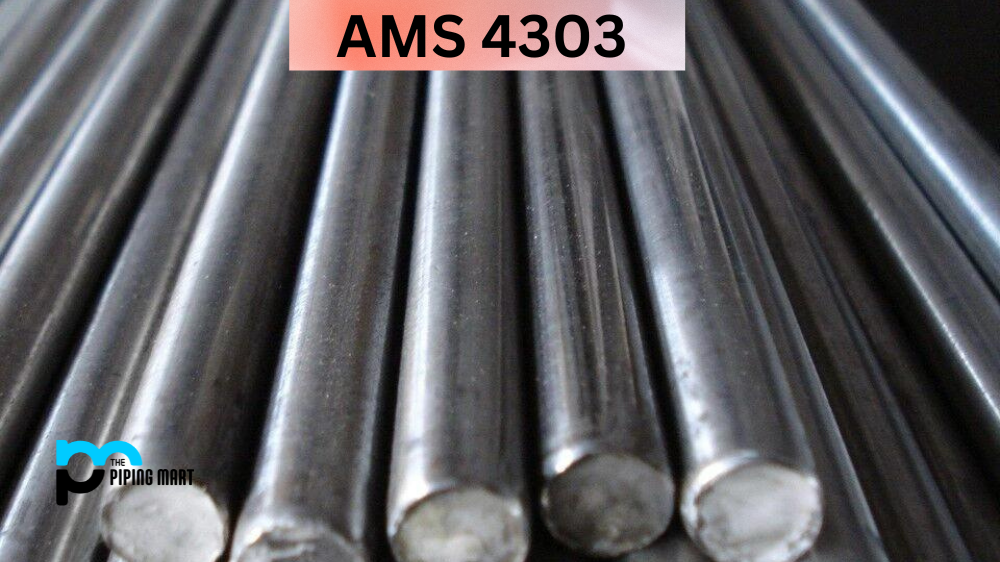AMS 4303 is a precipitation-hardening stainless steel alloy well-known for its exceptional corrosion resistance, strength, and durability. It is commonly used in aerospace applications, chemical processing, and oil and gas industries. If you want to learn more about AMS 4303, this guide will provide a comprehensive overview of its composition, physical and mechanical properties, uses, hardness, and heat treatment.
What is AMS 4303?
AMS 4303 is a specification used to define the material properties of steel forgings. It outlines the requirements for the chemical composition, mechanical properties, testing methodology, and permissible deviations for steel forgings used in high-temperature service. By adhering to the AMS4303 specification, manufacturers can ensure that their steel forgings meet the necessary performance standards for critical applications such as aerospace and defence. This specification plays a crucial role in maintaining the quality and reliability of steel forgings, which are essential components in various industries.
AMS 4303 Composition
AMS 4303 is a stainless steel alloy of chromium, nickel, and copper. It also contains small amounts of carbon, manganese, phosphorus, sulfur, silicon, columbium, and titanium. The presence of copper in AMS 4303 improves its corrosion resistance and strength. The carbon content in this alloy is lower when compared to other steels, which makes it less prone to corrosion and oxidation.
AMS 4303 Physical Properties
AMS 4303 has excellent physical properties that make it ideal for various applications. This alloy has a density of 7.80 g/cm³, a melting point of 1399-1435°C, and a thermal conductivity of 12.1 W/(m*K). Its coefficient of thermal expansion at room temperature is 17.4 μm/m·K.
AMS 4303 Mechanical Properties
The mechanical properties of AMS 4303 are extraordinary and make it a highly sought-after alloy. This alloy has a high tensile strength of 145 ksi, yield strength of up to 130 ksi, and an elongation of 10%. Another key characteristic of AMS 4303 is its hardness. When aged, it can achieve a hardness of up to 45 HRC.
AMS 4303 Uses
The corrosion resistance and strength of AMS 4303 make it suitable for various applications. It is widely used in aerospace, specifically for cryogenic storage tanks and aircraft parts. It is also used in chemical processing, oil and gas, and high-precision machining tools. Its ability to withstand high temperatures and pressures makes it ideal for use in highly demanding environments.
AMS 4303 Hardness
After precipitation-hardening, AMS 4303 can achieve a hardness of up to 45 HRC. The precipitation-hardening process involves heating the alloy to a specific temperature and cooling it at a specific rate. This process creates a stronger, more durable material that can withstand high levels of stress and pressure.
AMS 4303 Heat treatment
AMS 4303 requires a special heat treatment process to achieve the desired properties. The process involves solution treating, heating the steel to 1040-1070°C for 30 minutes, followed by water quenching. After solution treatment, the steel is aged at 620-625°C for 16 hours. The ageing process creates the desired hardness and strength in the steel.
Conclusion:
AMS 4303 is a strong, durable, and corrosion-resistant alloy that has a wide range of applications. Its exceptional physical and mechanical properties make it ideal for use in demanding environments such as the aerospace, chemical processing, and oil and gas industries. To achieve the desired properties, AMS 4303 requires a special heat treatment process involving solution treatment and ageing. Understanding the properties and uses of this alloy can help you make informed decisions when selecting materials for your projects.

Meet Bhavesh, a seasoned blogger with a wealth of knowledge and experience. From metal products manufacturing to retail, Bhavesh has a diverse background in various industries and is dedicated to sharing his insights and expertise with readers.




